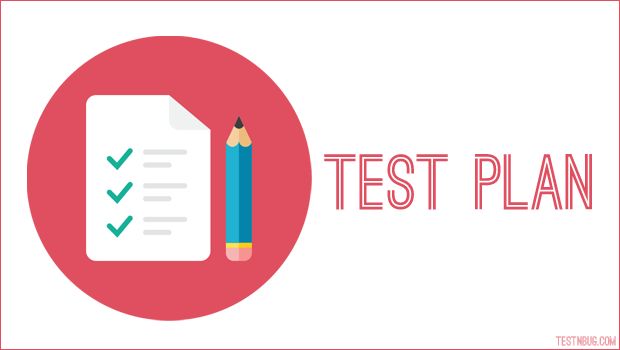Most organization set standards for documentation and coding for their ease communication convenience within the internal staff of the organization, Documentation standards are set of rules of preparing documentation. Documentation Standards specifies how to capture information of the particular test and its result.
Documentation Standards:
Most organization set standards for documentation and coding for their ease communication convenience within the internal staff of the organization, Documentation standards are set of rules of preparing documentation. Documentation Standards specifies how to capture information of the particular test and its result.
The documentation standard may include:
- Suitable header to the beginning of a file that indicates the functions to be served by that particular test.
- Enough in-line comments, which explains the functions served by the test.
- Up-to-date information of change history and recording of all events.
Test coding standards:
Test coding standards enforce how the test cases themselves are written. It goes one level deeper into the tests.
- Enforce the right way to initialize the test, and indicates how the test makes the results autonomous of other tests.
- Indicates the ways of how to name variables within the code to make sure the program is readable and understand it easily.
- Test coding standard also encourage of reusability of test artifacts.
- It also includes standards interfaces like hardware, operating system and so on to the external entities.
Test reporting standards:

Testing process is tightly interlinked with the quality of the product; all the stakeholders must get timely and consistent view of the test progress. Test reporting addresses this issue and provides guidelines to the testers, up to which of details should be produced in the reports.
Test Infrastructure Management:
Testing needs a robust infrastructure to be planned in advance. The essential elements of the Test Infrastructure management are listed below:
- Test Case Database (TCDB)
- Defect Repository (DR)
- Software Configuration Management Tool and Repository (SCM).
Test Case Database (TCDB) is a database which records all required information about all test cases of an organization. Some entities and its attributes are given in the following table. Apart from Test Case Database (TCDB) and Defect Repository (DR) one more is needed in Test Management is Software Configuration Management repository. It is also as Configuration Management or CM repository, which maintain change control and version control of all the files which are associated to particular software product.
Change control ensures the following things:
- Changes made in the particular Test file, is done by the authorize person and in controlled fashion.
- Changes made by a test engineer should not be lost or overwritten by another test engineer.
- Each change (at any particular time) generates a unique new version of the file.
- Every test engineer should have access to the recent version of test file at any point of time.
Test Case Database (TCDB), Defect Repository (DR) and Software Configuration Management (SCM) repository are complements to each other and work together in integrated manner as shown in the following figure. DR links different defects, their fixes and tests, where the necessary files will be in SCM. Meta data about the modified files of tests will be in TCDB.
Test Process:
Test process is a process of testing any software project to improve the quality of that software.
Test process is a process of series of main activities like:

- Preparing test plans
- Designing test cases
- Execution of test cases
- Reporting outcome of test cases.
Baselining Test Plan:
A Test Plan represent multiple points the form of single document, which will act as an anchor for the whole testing process. An organization design several templates for the test cases and each testing project has to be tested based on the template. Any change in the template is applied after careful deliberations.
Before any modification in the template, the test plan is revied by many designated people of an organization. It will be then approved by competent authority and then it will be applied into the template and then test plan is baselined into the Software Configuration Management (SCM) repository.
Test Case Specification:
With the help of test plan, testing team will design the test case specifications, which Will become the base in the preparation of individual test cases. The test case should have following things:
1. Purpose of Test Case.
2. Items to be tested with their versions and releases.
3. Environment needed to conduct the test case.
4. Input data to be used in the test case.
5. Steps to execute test case.
6. Expected result or outcome.
7. Steps to compare actual result with expected result.
8. Relationship if any between this test case to other test cases
Developing Test Cases:
Test engineer needs to develop Test Cases based on Test Case Specification. In this phase, test engineer can choose any method, that testing is done using manual test cases or by using automation system. Here the specification is transformed into the Test Cases. If the test engineer has chosen, automation instead of writing manual test cases. then in this phase a test engineer has to write automation scripts.
Executing Test Cases:
The prepared test cases will be executed at appropriate time on the project. During the execution of the test cases the defect repository will be updated with:
1. Defects from the earlier test cycles that are fixed in the recent build.
2. New defects if any, found during the current test run.
Preparation of Test Summary Report:
After completion of a test cycle, a detailed summary report of the testing is produced. This test summary report will be observed by senior management and decide the fitness of the product to be release.
Test Reporting:
Process of testing needs continues communication between the testing team and other teams. There are two types communications that are needed:
[1] Test Incident report
[2] Test summary report.
Test incident report:
Test incident report is basically a communication report, used during the testing cycle when the defect is found in the project. Test incident report is nothing but data entry is made in the defect repository when the defect is detected during the testing process. Those defects which have high impact on the project is mentioned in the test summary report.
Test Cycle Report:

Testing project needs many test cycles to complete. During each test cycle planning and execution of various test cases are conducted. After completion of each test cycle Newer build of product is form, which will be more stable version of the product then Privious build.
At the end of each test cycle, a test cycle report is produced which gives the following information: Details of the uncovered defects, detected during the test cycle. Progress of the current build compare to the previous build of product.
Test Summary Report:
Test summary report is the final report produced after completion of all test cycle and software product is ready to release. Test summary report summarizes the results of test cycle reports process during each test cycle. Usually, test summary reports are of two types:
1. Phase-wise test summary report.
2. Final test summary report. (Which is produced at the time of product release)?
A summary report should present the following things:
1. A detailed summary of the activity conducted during the test cycle.
2. Difference if any observed between the activity performed during testing and actually planned.
3. Summary of the result like test that failed with its reasons, impact of the defect on the project which is uncovered yet etc.
4. Complete evaluation and recommendation for the release
In Conclusion-
Most organization set standards for documentation and coding for their ease communication convenience within the internal staff of the organization, Documentation standards are set of rules of preparing documentation. Documentation Standards specifies how to capture information of the particular test and its result. A Test Plan represent multiple points the form of single document, which will act as an anchor for the whole testing process. An organization design several templates for the test cases and each testing project has to be tested based on the template. Any change in the template is applied after careful deliberations.
What is Developing Test?
Test engineer needs to develop Test Cases based on Test Case Specification. In this phase, test engineer can choose any method, that testing is done using manual test cases or by using automation system. Here the specification is transformed into the Test Cases. If the test engineer has chosen, automation instead of writing manual test cases. then in this phase a test engineer has to write automation scripts.
What is Test Cycle Report?
Testing project needs many test cycles to complete. During each test cycle planning and execution of various test cases are conducted. After completion of each test cycle Newer build of product is form, which will be more stable version of the product then Privious build.
Follow Twitter
New Post






